You are worried about vandals damaging valuable stained glass windows in your place of worship. What is the best way to protect stained glass windows in religious buildings? Should you use acrylic, plexiglass, Lexan, tempered, or laminated glass? Explore the complex details in this post.
Extremely valuable & vulnerable stained glass should be protected with Lexan or acrylic, but glass (laminated or tempered) can be used for panels at less risk. Always consult experts for the best advice.
Table of contents
- Summary of advice on stained glass protection
- Types of vandalism
- Damage to stained glass
- Window damage due to extreme weather
- Framing for protective glazing
- Pros and cons of protective materials
- High risk – high-value windows
- Moderate risk
- Low-risk or low-value windows
- Description of protective materials
- Where to purchase plexiglass – top tips from the experts.
- Who will cut custom sizes of acrylic?
- Specialist plexiglass wholesalers
- Conclusion
Beautiful stained glass windows have inspired congregations in churches and synagogues since the Middle ages – communicating the parables of the bible to illiterate peasants in glorious technicolor – transcendental symphonies of light worthy of heaven itself.
Unfortunately, the properties that give glass its translucency also mean that it is brittle and very easily broken. This has made glass a prime target for vandals – with stained glass windows being especially vulnerable because places of worship are generally not occupied at night and, regrettably may fall victim to ideological prejudice, racial hatred, or antisemitism.
(As an aside, students of criminology and history may wish to ponder that broken windows are metaphors in criminology for urban decay and, in a more sinister context, symbols of unspeakable events like Krystallnacht in 1938).
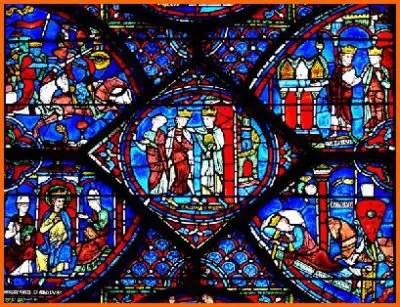
Why protect stained glass?
Unfortunately, even a simple stained glass panel is expensive to repair partly because the construction method, with colored glass fitted into H-shaped came, means that most windows cannot be restored on-site – they have to be removed to be fixed.
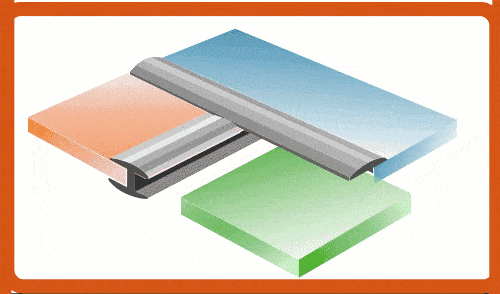
Typical restoration costs are in the $100 – $400 per square foot range + the costs to board up the opening and re-install – and a further problem is that it may not be possible to match antique glass exactly.
For these reasons, it is very important to protect valuable stained glass against damage by weather and vandalism.
Note that even Dalle de Verre – made from 1″ thick slabs of glass – can be damaged by a determined vandal.
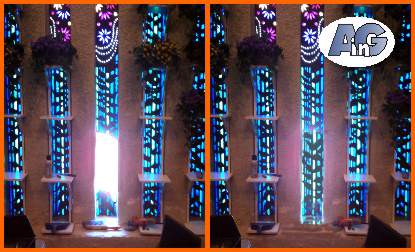
In addition to protection, it’s also important to catalog and appraise the value of your panels for insurance purposes. These estimates should be updated periodically (15-20 year intervals) because of the effects of inflation on stained glass replacement prices.
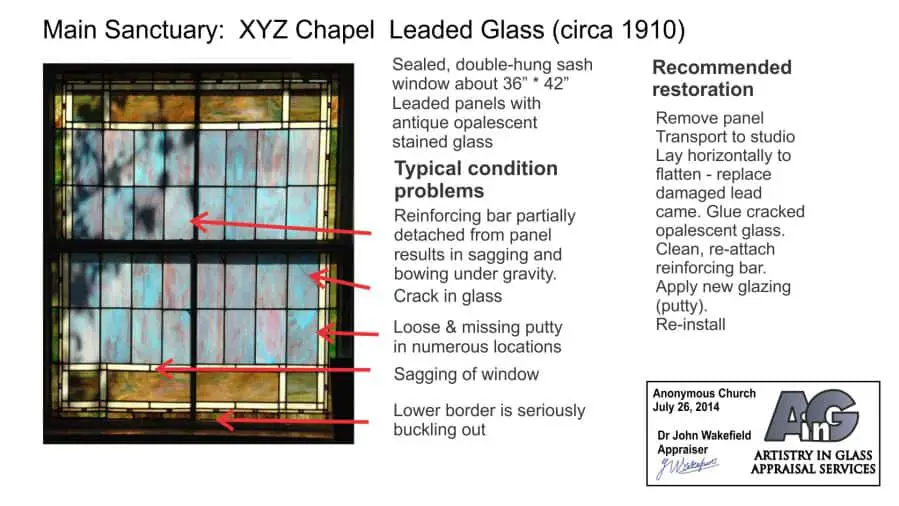
Study this video to learn about the conservation of stained glass in religious buildings.
As an Amazon Associate, I earn from qualifying purchases
Summary of advice on stained glass protection
The choice of a protection system for stained glass windows is not a simple matter. The best solution for a humble south-side chapel will not be the same as that appropriate for a historic metropolitan cathedral.
This post explains that the most prudent choice can only be made by carefully analyzing the risks presented by each group of windows to potential damage. The proposed protection (expensive and unbreakable, or inexpensive and strong) should be chosen with these risks, together with the replacement value of the stained glass, in mind.
In some cases, different protective materials may be appropriate for different windows in the same building. For example, panels situated at a great height and out of reach of projectiles can be protected by tempered glass, whereas windows at ground level are best protected by unbreakable Lexan.
Study this post carefully for detailed advice.
Types of vandalism
It is vital for church custodians to understand that vandalism can take place inside as well as outside of your place of worship. There has been an epidemic of church vandalism over the past 5 years with the Roman Catholic Church being especially victimized.
More than 130 occurrences of vandalism have occurred in the US since May 2020. Incidents include arson, statues beheaded, limbs cut, smashed, and painted, gravestones defaced with swastikas and anti-Catholic language, and other destruction and vandalism.
“Stop the press” – in breaking news today, a $2 Million gold tabernacle has been stolen from a Brooklyn Catholic Church.
No amount of exterior protective glazing will serve its purpose if criminal vandals are allowed access to the interior of your church, synagogue, or mosque.
Exterior damage
The most common exterior damage to church windows takes the form of breaking stained glass and other windows, destroying gravestones & statuary, and painted graffiti. This post concentrates on how to protect stained glass but custodians should be aware of the wider problem when devising measures to combat vandalism.
The causes of vandalism
In some cases, vandalism represents protests against perceived injustices. Sometimes there might be general anger against the Church, and in other cases, there is no reason at all, In many cases, the damage appears to be the result of opportunistic action by bored or alienated teenagers. Perpetrators may work alone or as part of a group.
Damage to stained glass
The most common damage to church windows is broken glass caused by impacts with missiles – most often rocks and similar hard objects. A second category of damage is graffiti generally caused by spray paint.
A well-aimed rock thrown at high speed will cause serious damage to unprotected stained glass. To understand the nature of the risk – consider Newton’s 2nd law of motion:

The implications of this famous law are that large massive rocks, accelerated by strong individuals at a close distance are much more damaging them small pebbles tossed at long range.

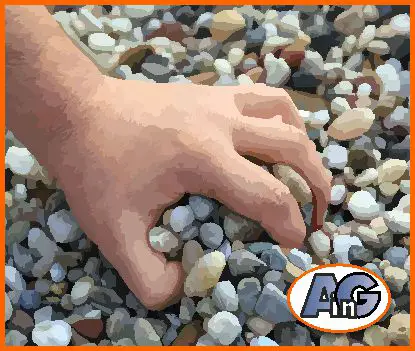
A lesson for church landscapers: many acts of vandalism are opportunistic – do not surround your church windows with ready-made ammunition in the form of large rocks or boulders!
Premeditated vandalism or attempted robbery
Equally damaging as rock-throwers are more determined and premeditated acts by criminals wielding baseball bats or crowbars. The motives may be robbery, revenge, or ideology.
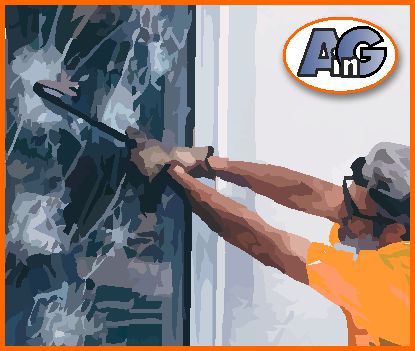
In the Sonoran Desert of Southern Arizona, Tucson landscapers minimize the risk of access vandalism by planting thorny cacti and succulents adjacent to exterior windows.
Window damage due to extreme weather
With the threat of extreme weather growing due to the effects of climate change, large parts of the USA are threatened by storm and hurricane-force winds. Coastal areas along the Gulf of Mexico, Florida, and the Atlantic Seaboard are vulnerable to extremely damaging hurricanes. In addition, a large section of the Southern States and the Mid-West is now subjected to violent tornadoes with 250 mph winds capable of leveling entire communities.
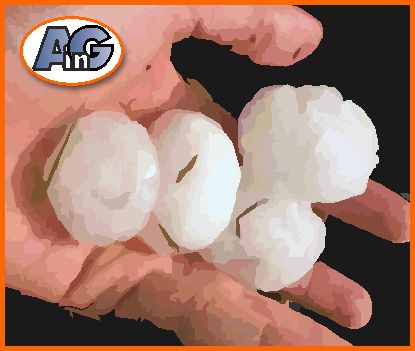
Large hailstones and tornado debris traveling in excess of 200 mph can make short work of stained glass windows.
Framing for protective glazing
It is vitally important to make sure that your efforts to protect stained glass do not have the undesired side-effect of causing damage by generating excess heat or condensation.
Protective glazing must be installed with a substantial air gap and with ventilation holes at the top and bottom of the panels to ensure the circulation of air.
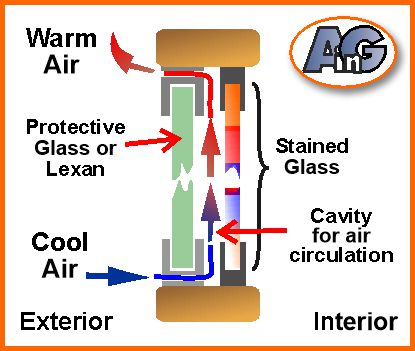
For major projects involving large windows with unusual shapes (like Medieval lancet or Quatro-foils), we recommend the patented Klear-Flo® protective glazing system created by Associated Crafts® & Willet Hauser®. These custom aluminum extrusions come with specially screened ventilation holes for efficient circulation of air.
New framing must match the old
The exterior appearance of many old church windows has been ruined by superimposing discordant new frames over the original Gothic designs – as in this egregious example:
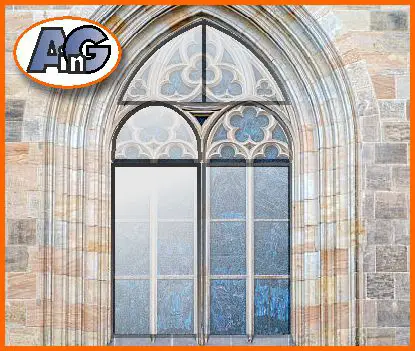
The construction of custom framing is the most crucial first step in protecting historic stained glass. Make sure you choose a qualified and experienced contractor.
Having designed the correctly ventilated and coordinated framing, it’s now time to choose the glazing material. The pros and cons of the most popular choices are summarized below:
Pros and cons of protective materials
| Material | Pros | Cons |
| 1/4″ clear annealed glass | Looks better than plastic – less deflection, easily cleaned, scratch-resistant | Heavy, breaks easily into dangerous shards. All glass types are hard to drill |
| 1/4″ clear tempered glass | Same benefits as above but 4 X stronger than annealed. Optional low-E coating | Heavy, shatters into numerous popcorn fragments |
| 1/4″ Laminated glass | Same benefits as above but hurricane-resistant. Vinyl interlayer holds panel together when glass is broken | Heavy, more expensive than annealed & tempered glass |
| 1/4″ Acrylic “Optix-L” formerly Lucite | Impact-resistant acrylic is 7 X stronger than tempered glass, Clear, and non-yellowing. Can be drilled for vent holes | More expensive than glass, Somewhat easily scratched & hard to clean |
| 1/4″ Lexan XL10 or equivalent | Virtually unbreakable – 200 X stronger than tempered glass. With UV surface protection guaranteed for 10 years. Can be drilled for vent holes | Most expensive option. Yellows with exposure to sunlight. Easily scratched & hard to clean |
Each of these materials has its particular benefits and there is no correct option for all situations.
The choice depends on the nature of the threat, the value of the stained glass, and the budget available. We distinguish these 3 main categories of risk.
- High risk & high-value windows
- Moderate risk, moderate budget
- Low risk & low budget
High risk – high-value windows
The top-level of protection is justified if your stained glass is historic, precious, and very valuable. The risk is increased if such windows are located in a dangerous, high-crime area, if you have a history of vandalism, or evidence of specific threats (from unhappy or vengeful congregants, for example). Further danger indications include local episodes of racial or religious hatred or antisemitism. Finally, top-level protection is essential if you live in an area prone to hurricane-force winds or tornadoes.
For this category of windows, we recommend polycarbonate with anti-UV coating – known by the trade name Lexan XL10. This material is virtually unbreakable and is guaranteed against yellowing for 10 years.
The degree of yellowing will vary, being most marked in South-facing windows in sunny regions of the USA for example. Even under these extreme circumstances, the milky yellow tint, although visible from the outside, will be inconspicuous from the inside of the building for many years.
While we strongly recommend Lexan for the most vulnerable and most valuable windows, customers concerned about yellowing and wishing to economize slightly can feel reasonably certain to safeguard against breakage by using a strong type of acrylic called by the brand name Optix L (formerly Lucite L).
One strategy would be to use Optix L on lower-risk panels and unbreakable Lexan XL 10 on heirlooms and irreplaceable works of art. However, be aware that the exterior appearance will begin to vary as the different materials weather at different rates.
Moderate risk
Less expensive protection is justified if your windows are of less intrinsic value and are judged to be of less risk of damage. This important risk assessment must be carried out in the light of local knowledge but less vulnerable windows may be those in more affluent neighborhoods and those protected from intruders by fencing or security systems.
Options for protective material include Optix L acrylic, laminated or tempered glass. Note that glass has the benefit that it scratches less easily than acrylic and can also be cleaned more easily if deface by graffiti.
Low-risk or low-value windows
Low-priority stained glass windows include simple, inexpensive panels that are protected from casual vandalism by locked courtyards or those that are high up and out of reach of large projectiles.
Windows that are not subjected to extremes of weather like hurricane-force winds or damaging hail are also under reduced risk of damage.
Here, the benefit of protective glass may be mainly to insulate the stained glass panels from extremes of weather and to protect them against gravel thrown up by careless lawnmowing or from water spray from a garden hose. Options for relatively inexpensive protective material include annealed or tempered glass.
In conclusion
There is no simple solution for all stained glass protection projects. Take local risk assessments into account and seek the advice of experts. Tucson or Southern Arizona customers can get free advice from Artistry in Glass.
Description of protective materials
Annealed glass
Annealed glass – the most affordable type of glass was formerly known as “plate” but is now made by the Pilkington float glass process. Annealed – glass that has not been tempered or heat-strengthened – is used for shelving and protective tabletops but is easily broken and shatters into dangerous shards.
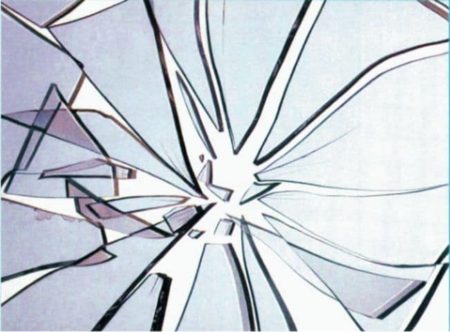
Tempered glass
Float glass starts out annealed and is then “tempered” or heat-strengthened in large ovens in the glass factory. Quenching the outer surface and then slowly cooling the interior creates a toughened compressed surface that is 4 -5 times more impact-resistant than annealed glass.
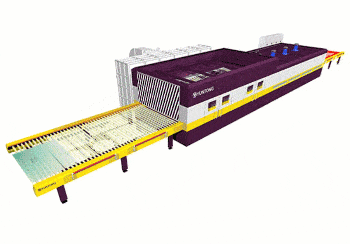
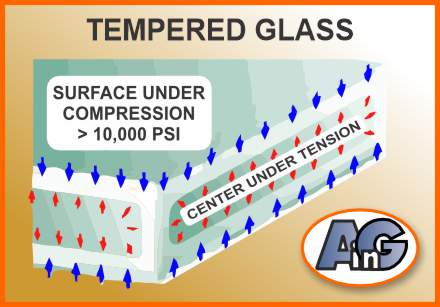
Once tempered, glass cannot be drilled or cut – if you try to do so, it explodes into numerous harmless “popcorn” pieces:
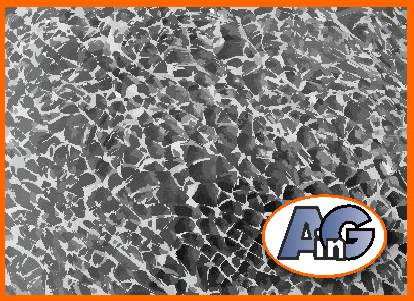
Learn more about tempered glass in this post.
Laminated glass
Laminated glass – sometimes called safety glass is made by sandwiching a layer of vinyl (Polyvinyl butyral (pvb)) between two sheets of annealed glass. The annealed glass has the same low impact resistance as regular annealed glass but the PVB layer holds the panel together when the glass breaks.
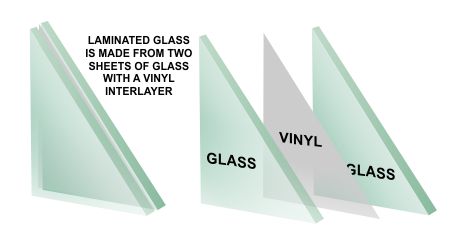

The ability to hold the glass together after large impacts have made varieties of laminated glass the recommended glazing for hurricane-proof windows. (Keeping the house envelope intact is crucial in high winds because, if windows break during a hurricane the resulting funnels of air will blow away the roof and destroy the house.)
Laminated glass is a good choice for protective glazing if you have a local glass shop with reasonable pricing. Laminated glass stays clear with no yellowing and the vinyl interlay stops 97 % of UV light. Even though it will break with heavy impacts. the window will not give way and your stained glass will normally be safe.
Acrylic Optic L
Optix L is a type of acrylic related to plexiglass. The positives are that it is stronger than regular plexiglass, and stays clear even when exposed to sunlight. It is 20 times stronger than tempered glass so is really hard to break – although it is not as strong as Lexan. Unlike glass, it can be drilled to provide ventilation holes.
For details about the pros & cons of plexiglass vs tempered glass read this informative post
Lexan XL 10 polycarbonate
Polycarbonate (PC) is an amorphous thermoplastic material that is virtually unbreakable. In addition to its toughness, the clarity (transmits over 90% of light) and the light weight make it very useful for protective glazing.
Lexan is the brand name of the type of polycarbonate developed by General Electric (GE) in 1960. The Bayer company in Germany had already patented their version of polycarbonate under the brand name “Makrolon” in 1955.
Lexan XL 10 is a special Lexan upgrade with a UV-blocking surface layer applied to one side or both sides. Manufacturers guarantee it against yellowing for 10 years with this UV coating.
To avoid high shipping charges, we recommend you buy large sheets of Lexan locally. But if you just need a small, 24″ * 36″ sheet the best deals are like these from this vendor from Amazon.

Money-saving tip! Glass and plexiglass are essentially the same quality from whichever shop you purchase them. Save money by using these glass-buying tips from the experts at Artistry in Glass.
Where to purchase plexiglass – top tips from the experts.
Numerous online vendors advertise “best prices” and “free shipping” but the bottom line is that shipping a full (48″ * 96″) sheet is prohibitively expensive.
For example, the price of a full (48″ * 96″) sheet of 1/4″ thick plexiglass from a top vendor like Fab Glass and Mirror comes to a whopping $736.25 with”free shipping”. This is a company that advertises “we will beat any price by 10%”. So, the #1 tip for purchasing large sheets of acrylic is to always buy locally.
In summary:
- always buy large sheets locally to avoid shipping charges
- for best pricing – purchase full sheets
- learn how to cut acrylic – or get to know someone who can
The exception to buying locally is with sheets 24″ * 36″ or less. This size is affordable to ship because it falls under certain “oversize” UPS and FEDEX limits. So – explore your options on Amazon for these smaller sheets:
Who will cut custom sizes of acrylic?
Our latest inquiries reveal that neither Home Depot nor Lowes will cut acrylic but they do have competitive pricing on full sheets if you can figure out how to trim them to size.
Many local Ace Hardware shops will cut thin (1/8″) plexiglass and often include the cutting in the retail acrylic price. But check ahead because many stores are independently owned and services vary.
Specialist plexiglass wholesalers
Specialist acrylic outlets will cut sheets to size and we like the national chain “Calsak Plastics” for its great service and good pricing. They have a complete range of acrylic and polycarbonate. Follow this link to find branches in Atlanta, Charlotte, Los Angeles, Minneapolis, Portland, Seattle, Tucson, and Irving, TX
Look for specialist wholesale outlets on the web for a dealer near you.
Conclusion
There is no simple rule for protecting stained glass in religious buildings. Each project must be assessed individually to judge the risk of damage in the light of local knowledge.
Extremely valuable & vulnerable stained glass should be protected with Lexan or acrylic – panels at less risk can be protected with laminated or tempered glass.
Glass safety – learn from the experts!
- Choosing between tempered & laminated glass
- Broken glass injuries and how to avoid them
- Is wired glass safe?
- What is safety glass?
- What is tempered glass?
- What is Gorilla Glass?
- Plexiglass vs glass
- Should glass shelves be tempered?
- Should glass tabletops be tempered?
- Is lead crystal dangerous?
- Is leaded (stained) glass dangerous?
- How to repair cracked stained glass
All you need to know about art glass
Commissioning stained and etched glass
- Stained glass designs from Artistry in Glass
- How to commission a stained glass window – complete advice
- How to commission an etched glass window
- How to choose the best stained glass design
- Etched or stained glass – which is better for your home?
- How much does stained glass cost?
- How much does etched glass cost?
Technical information
- Is leaded glass dangerous? Learn the facts.
- How to replace broken patio table glass
- Plexiglass and glass – what are the pros and cons?
- What is plexiglass used for?
- What costs more – glass or plexiglass?
- Preservation of stained glass in churches & synagogues
- How does stained glass get colored? learn from an expert!
- Is your broken stained glass panel worth repairing?
- How to protect stained glass in religious buildings
- How to care for and clean stained glass
- How to repair cracked stained glass
- What is Dalle de Verre?
- How to repair Dalle de Verre
- What to do about bowed & sagging stained glass
- How to care for a stained glass skylight
- Can my stained glass lampshade be repaired?
- What is the difference between sandblasting & etching?
- Obscure and frosted glass – all you need to know!
- How to save money when buying glass
- Glossary of important terms used in decorative glass
- 14 Ways to sell stained glass
- What is imitation or faux stained glass?
Guides to stained glass design
- Guide for designing abstract stained glass
- Why choose abstract contemporary stained glass
- How to design a Frank Lloyd Wright-style window
- Designing a WWII-era stained glass Waco glider
- Stained glass and Black Lives Matter
- How Is stained glass used today?
Artistry in Glass was your source for antique repair in Tucson
Check out this amazing selection of informative articles:-
- Where can I get antiques repaired?
- Are broken antiques worth fixing?
- How to fix a broken picture frame
- How to repair a broken china plate
- How to repair a broken china teapot
- How to fix a broken marble slab
- How to repair a broken china coffee mug
- How to repair a 2000-year-old sculpture
- All about repairing stained-glass lampshades
- How to care for your stained glass skylight
- How to repair Dalle de Verre
- Is stained glass worth repairing?
- To repair or toss out?
- Tucson crystal & china repair a division of Artistry in Glass
- What to do with broken antiques
- Is lead crystal dangerous?
- Repairing an antique Mexican statue
- Repairing religious statues
- The history of Swarovski crystal figurines
- How to find the value of a Swarovski Crystal figurine
- Have Swarovski crystal figurines lost value since 2009?
- How to collect Swarovski annual ornaments
- How to display Swarovski crystal figurines
- How to authenticate a Swarovski crystal figurine
- How to display Swarovski annual ornaments
- How to clean Swarovski crystal figurines
- How to repair a Swarovski crystal mouse
- How to repair a Swarovski annual ornament
- How to repair a Swarovski crystal train set
- Fixing broken wine glass stems
- How to clean cloudy glasses
- Why do wine glasses have stems?
- Swarovski Crystal Figurines
- How to repair a chip in a wine glass
- How to fix a scratched glass tabletop
- How to replace a broken patio tabletop


